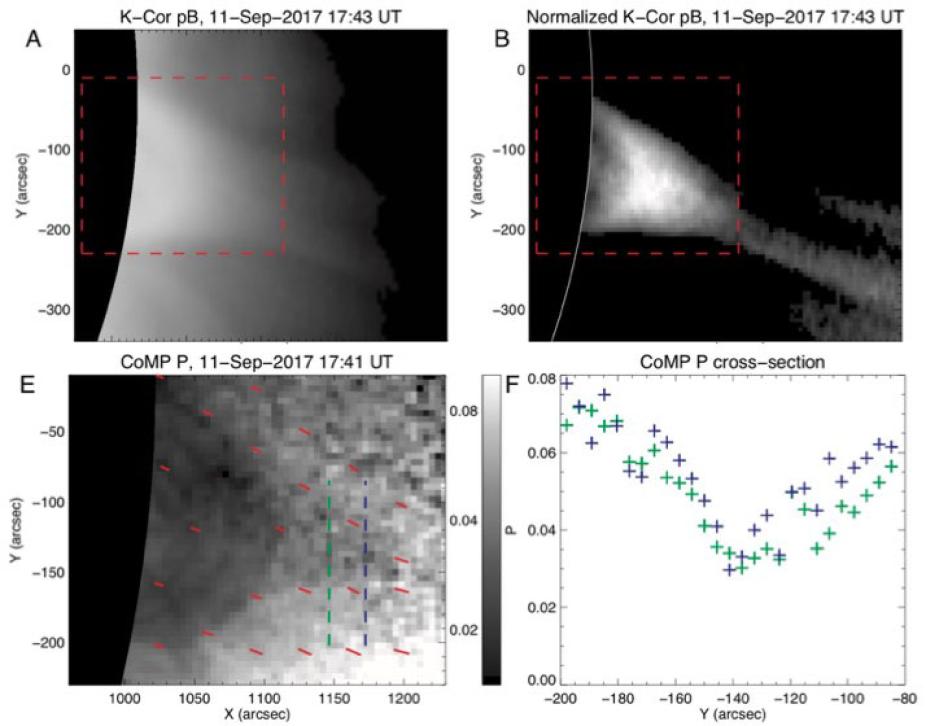Publication Name: ApJ; First Author: Ryan French; Authors names as they are listed in article: Ryan J. French, Sarah A. Matthews, Lidia van Driel-Gesztelyi, David M. Long, and Philip G. Judge
In this multi-instrument paper, we search for evidence of sustained magnetic reconnection far beyond the impulsive phase of the X8.2-class solar flare on 2017 September 10. Using Hinode/EIS, CoMP, SDO/AIA, K-Cor, Hinode/XRT, RHESSI, and IRIS, we study the late-stage evolution of the flare dynamics and topology, comparing signatures of reconnection with those expected from the standard solar flare model.

White light images (upper panels A and B) from HAO's KCOR instrument are shown with Fe XIII emission line polarization data (HAO's CoMP instrument) acquired one day after the initial flare was released. EUV data from SDO revealed no emission associated with the reconnecting sheet at this time.
Examining previously unpublished EIS data, we present the evolution of non-thermal velocity and temperature within the famous plasma sheet structure, for the first four hours of the flare’s duration. On even longer time scales, we use Differential Emission Measures and polarization data to study the longevity of the flare’s plasma sheet and cusp structure, discovering that the plasma sheet is still visible in CoMP linear polarization observations on 2017 September 11, long after its last appearance in EUV. We deduce that magnetic reconnection of some form is still ongoing at this time – 27 hours after flare onset.